One of the Maltese UNESCO World Heritages is a collection of six megalithic temple sites:
- Ġgantija
- Ħaġar Qim
- Mnajdra
- Skorba
- Ta’ Hagrat
- Tarxien
The sites
Ġgantija
Located at the end of the Xagħra plateau, the Ġgantija temple faces the southeast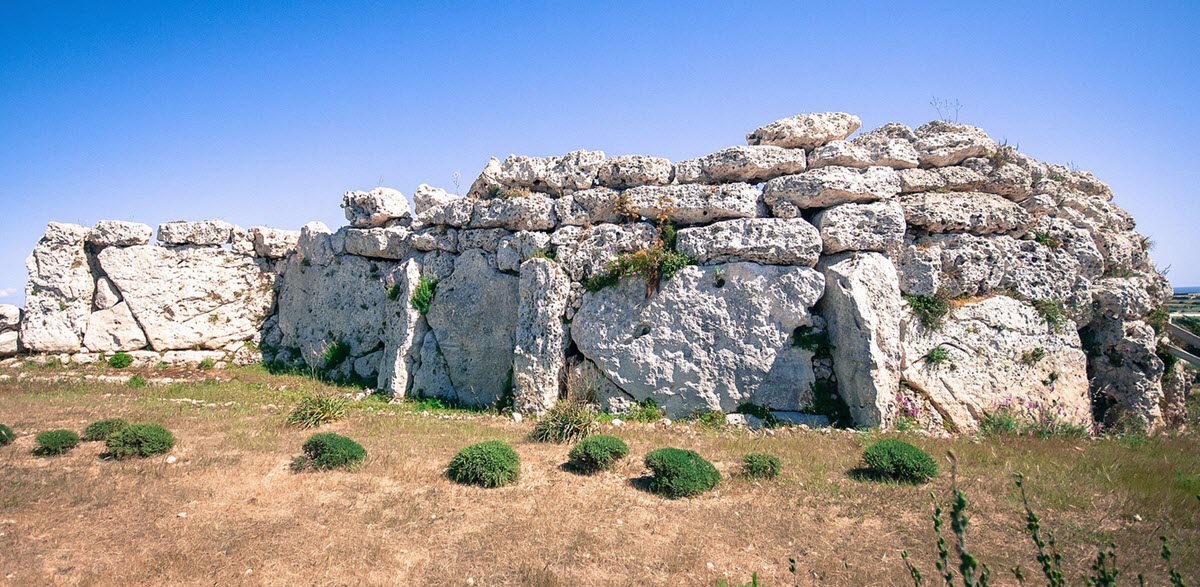 and is enclosed by a boundary wall. The south-facing wall is the oldest one, and it is also more well-preserved than the others.
and is enclosed by a boundary wall. The south-facing wall is the oldest one, and it is also more well-preserved than the others.
A fairly correct drawing of the temple´s layout was made by the French painter and engraver Jean-Pierre-Louis-Laurent Houël in the late 1700s.
In 1827, the site was cleared of debris, and soil and remains were discarded without proper examination and cataloguing.
Ta’ Ħaġrat
This temple is found on the eastern side of the Mgarr village. The distance between Ta’ Ħaġrat and another temple named Ta’ Skorba is approximately one kilometre.
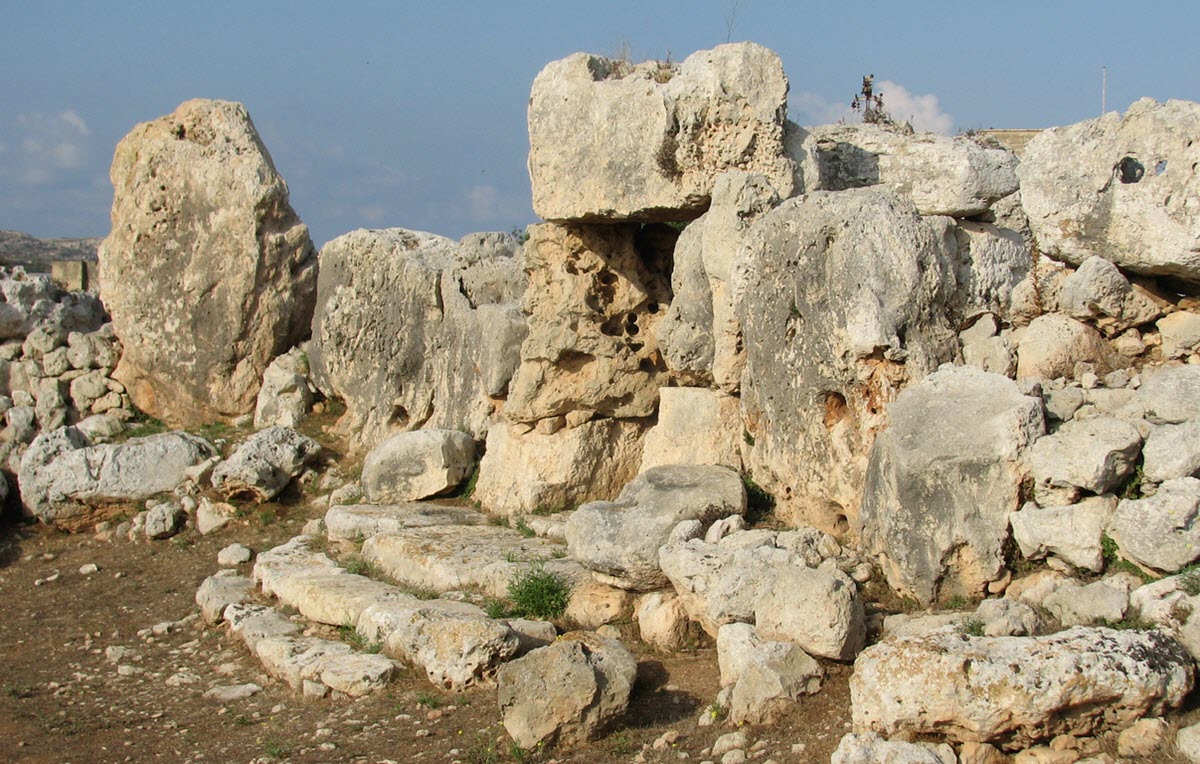
Ta’ Ħaġrat was once a double temple comprised of two adjacent trefoil complexes.
The site was excavated by Sir Temi Zammit in 1925-1927.
Skorba
The Skorba temples were built on the northern edge of Zebbiegh and were first excavated in the 1960s, which is late compared to the other temple sites. Therefore, more modern and careful methods were employed.
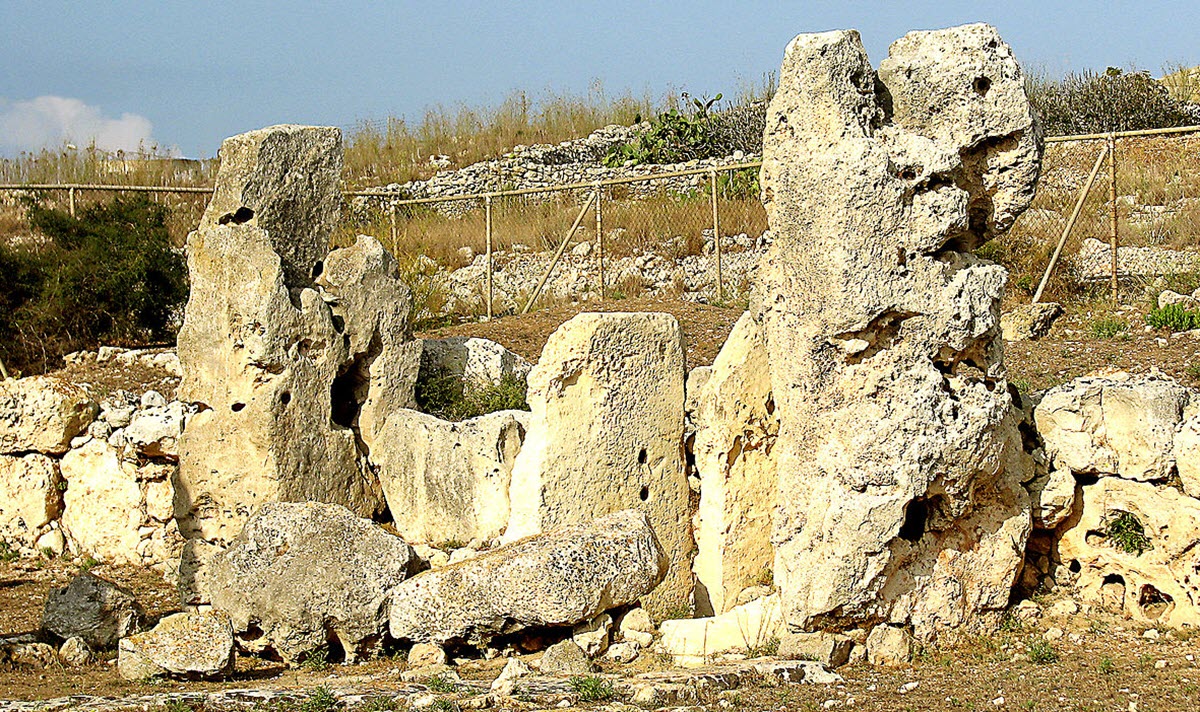
The structures are not in good condition. Of the once three-apsed shape, two apses have been destroyed down to ground level.
The oldest structure on the site is an 11 metre long straight wall west of the temple´s first entrance. Some of the oldest evidence of humans living on the island were found here.
Ħaġar Qim
Ħaġar Qim is located on a ridge, roughly 2 km from the villages Qrendi and Siggiewi.
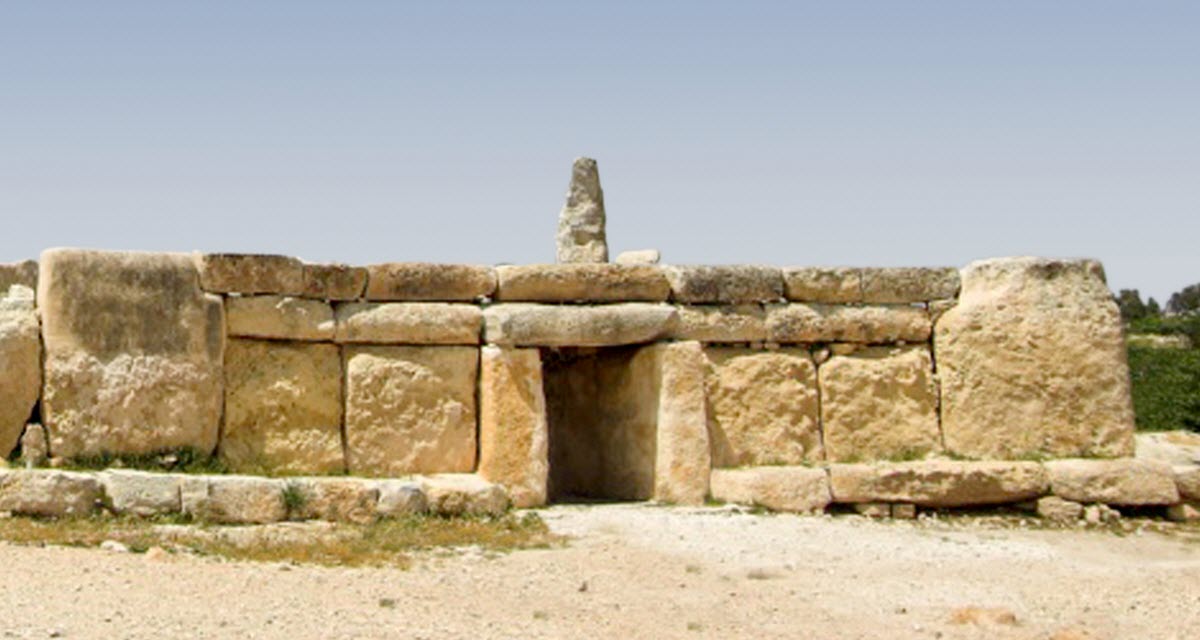
The structure was built using soft limestone, and the outer southern wall is more worn than the rest as it is exposed to the wind from the sea.
The temple has a wide forecourt with a retaining wall. Through a separate entrance, it is possible to access four enclosures that are independent of each other.
Mnajdra
This site is found just half a kilometre from Ħaġar Qim.
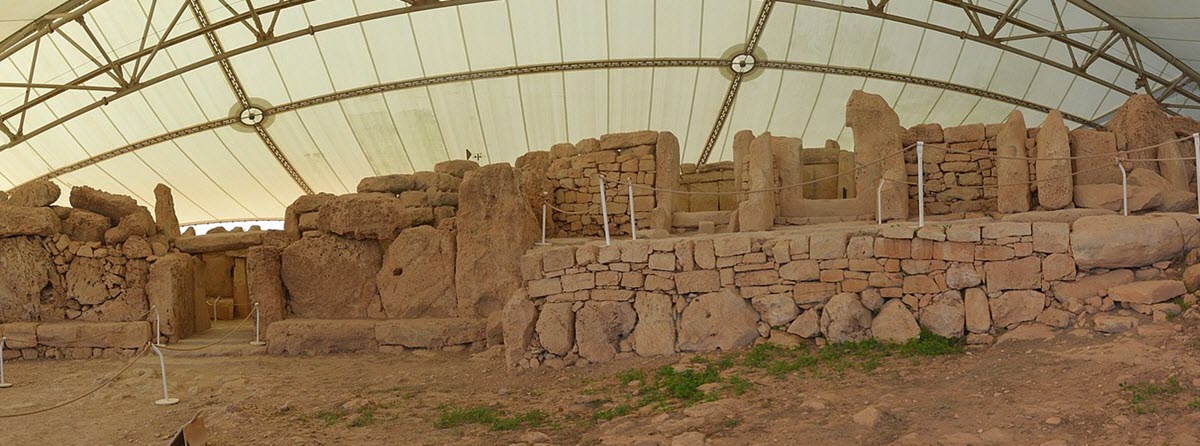
The temple site is centred on an almost circular forecourt, and three nearby temples overlook this forecourt from one side. A terrace function as a separation from the steep slope that runs down to the sea.
- Thesmall trefoil temple present has been dated to the Ggantija phase and is the oldest temple on the site.
- Another temple here, known as the Middle Temple, is believed to be the last one built on this sites. It was probably inserted between the others later than 3100 BCE.
- The third temple was built during the early stage of the Tarxien era, and is the second-oldest temple on the site.
Sun orientation
The southern temple is aligned with the rising sun during summer and winter solstices, and during the equinoxes. On the summer solstice, the first rays of sunlight light up the edge of a decorated megalith between the first apses. On the winter solstice, the first rays of sunlight light up a megalith on the opposite apse. During an equinox, the first rays of sunlight go straight through the main doorway and reaches the innermost central niche.
Tarxien
This temple complex is located roughly 400 metres east of the Hypogeum of Ħal-Saflieni, and is surrounded by modern urban development.
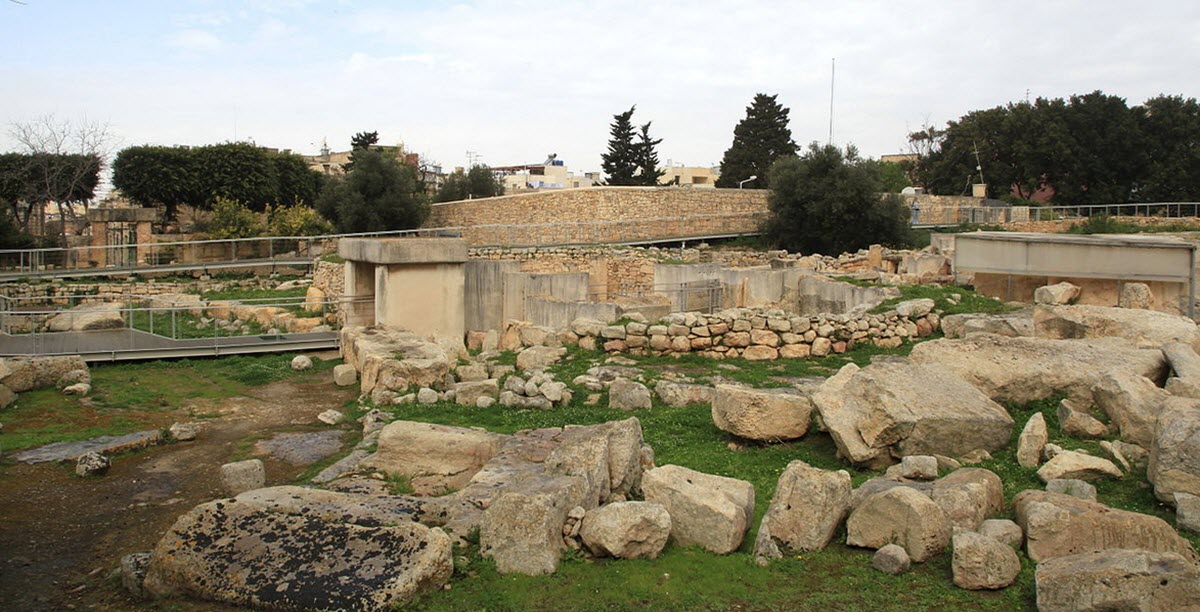
The oldest temple, to the north-east, was built in 3600-3200 BCE. It was created using very large stones, and some of them were roughly dressed.
The south and east temples are younger and were constructed in 3150-2500 BCE. Both are decorated. You can for instance see flat raised spirals and other carved patterns, and there is a relief depiction of two bulls and a sow in one of the temples.
Other megalithic temples
The six sites listed as UNESO World Heritage are not the only sites with megalithic temples in Malta. Here are some examples:
- Borġ l-Imramma
- Borġ in-Nadur
- Buġibba
- Debdieba
- Kordin I – III
- Ħal-Ġinwi Temples
- Qortin l-Imdawwar
- Santa Verna
- Ta’ Marżiena
- Ta’ Raddiena
- Tal-Qadi
- Tas-Silġ
- Xemxija
- Xemxija I and II
- Xrobb l-Għaġin
The Megalithic Temples on Malta were built during three distinct cultural periods, between 3600 and 2500 BCE. According to Maltese folklore, they were built by giants. In older publications, they are called the oldest free-standing structures in the world, but those publications are from before the discovery of Göbekli Tepe in south-eastern Anatolia in the 1960s.
